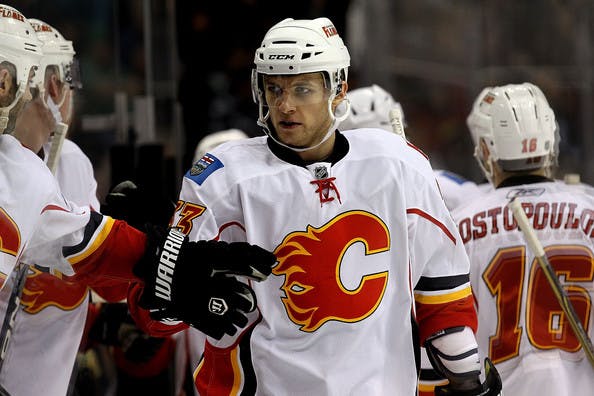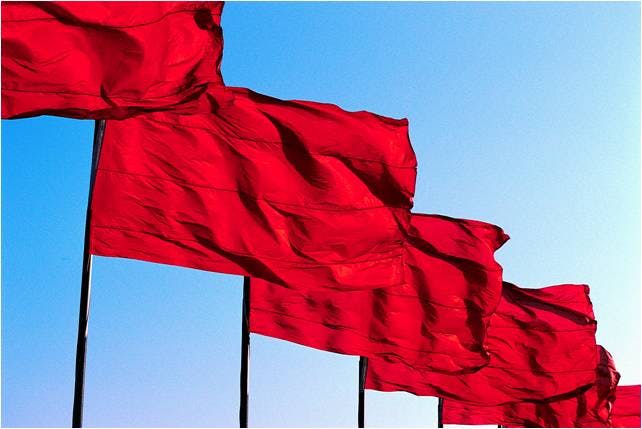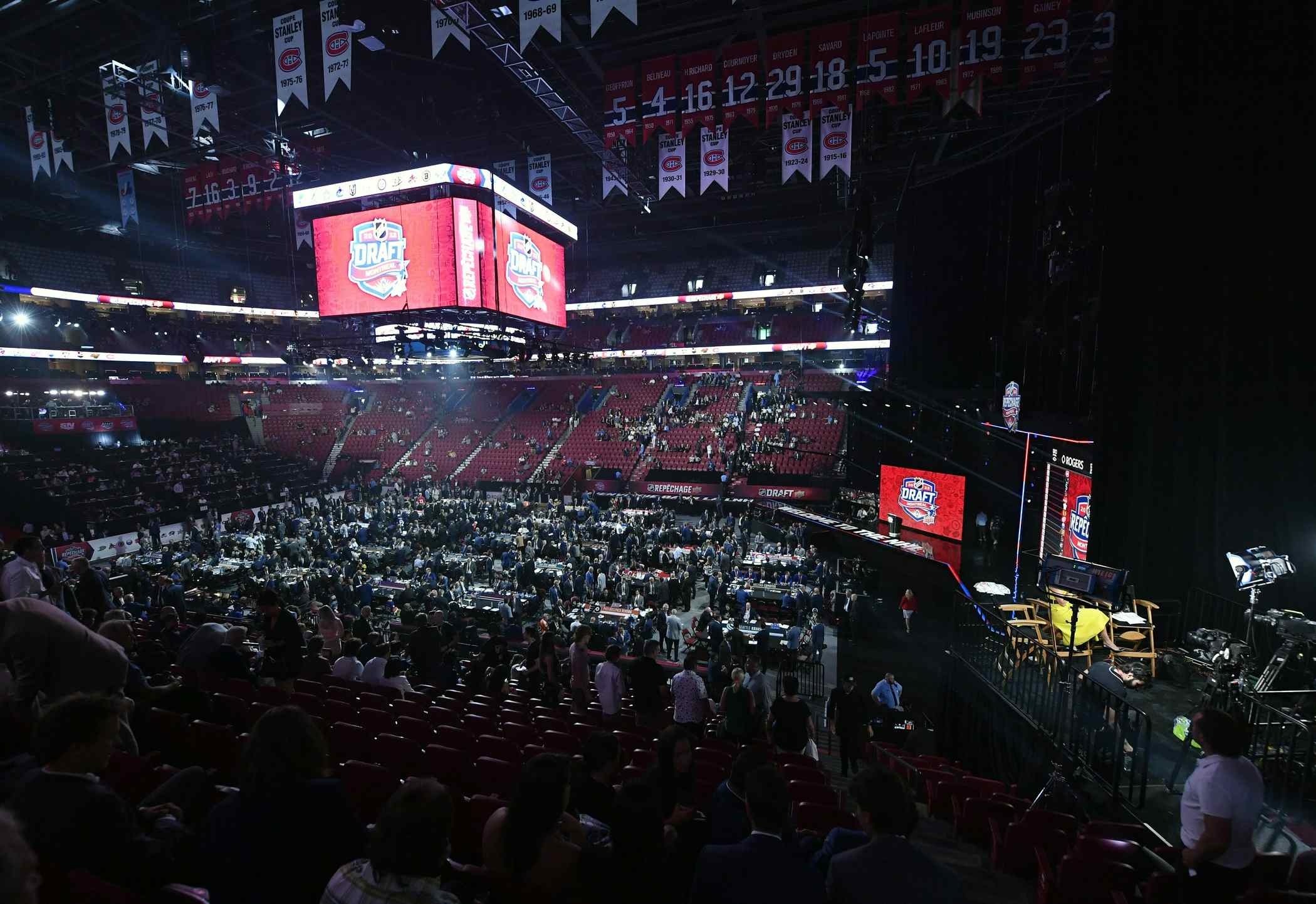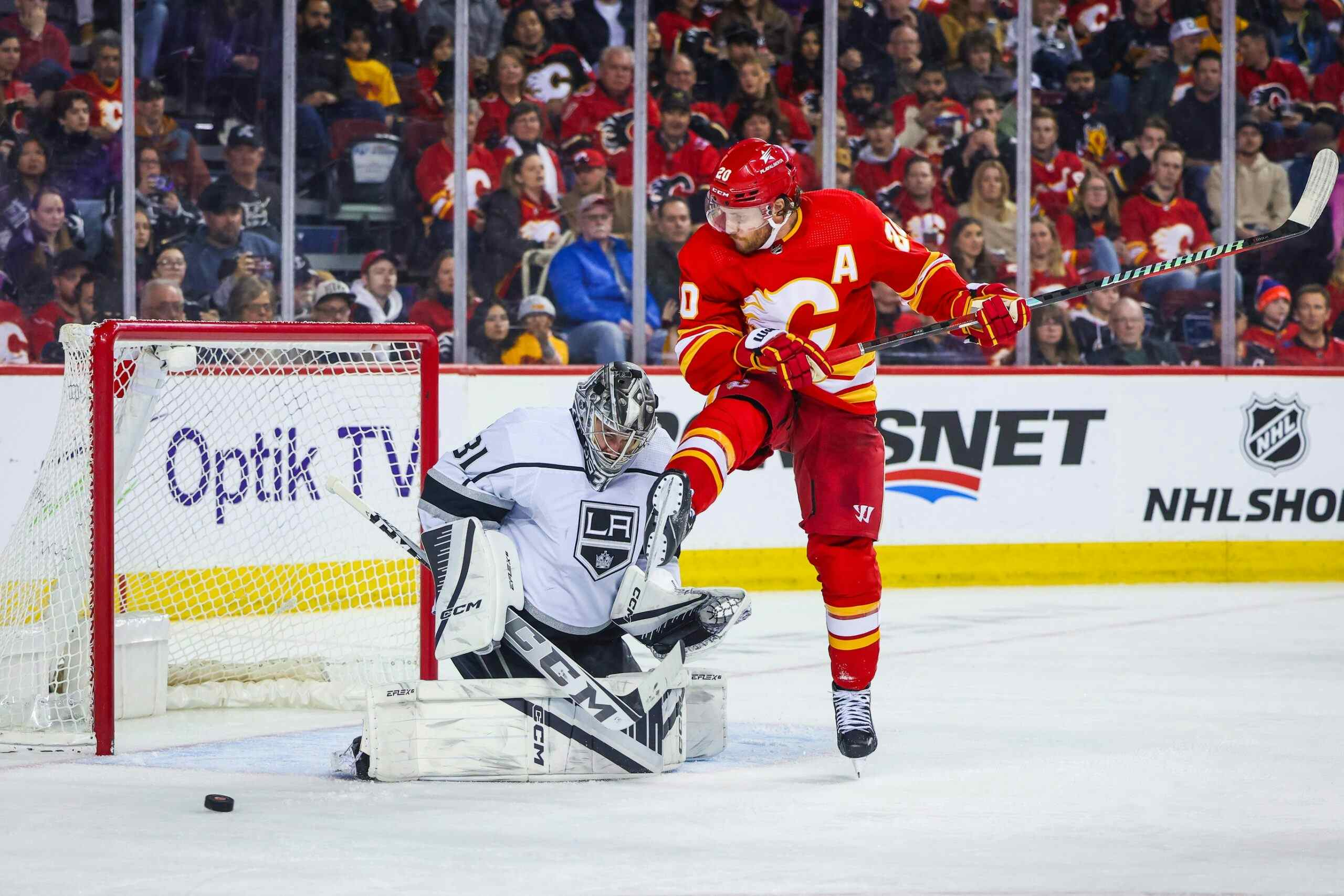The Pros and Cons of Anton Babchuk
By Kent Wilson
12 years ago
During the season I was adamant the Flames should not re-sign Anton Babchuk when his ticket expired in the summer. This probably struck many people as odd – the big Ukrainian scored eight goals and 27 points in just 69 games for the Flames and was a +18 to boot. He also added an element to Calgary’s power-play that has been missing since Dion Pahneuf left town: a booming slapshot from the point.
A frequent mistake made by both fans and managers in the NHL is to be seduced by a nice stats line without fully investigating the circumstances that led to it. Not all minutes are created equal in the NHL. Coaches generally deploy players in ways that best suit their strengths or hide weaknesses. Some guys start out in their own end a lot, PK a lot and face the big guns every night. Those defenders don’t generally collect the goals and assists (unless they are Nik LIdstrom or Duncan Keith that is). Other guys face the marshmellows: they don’t PK, they start out every other shift in the offensive zone and they never see the whites of Pavel Dastyuk’s eyes if their coach can help it.
The Red Flags

I have been explicit about this previously, but it bears repeating: Anton Babchuk played some of the easiest minutes available amongst regular NHL defensemen last year. Out of the seven Flames defenders who played 30 games or more last year, Babchuk’s quality of competition rating ranked 6th (with only Adam Pardy behind). In addition, Babchuk’s offensive-to-defensive zone start ratio was 61.9%, the easiest on the team. In raw numbers, he saw 135 more o-zone than d-zone draws.
To give some context, that ZS was the third highest in the NHL for defensemen who played at least 30 games. Only nine defensemen total had a percentage above the 60% mark*.The only two defenders with a relative quality of competition measure in the same realm as Babchuk were tough guy Paul Bissonette and fringe NHLer Sheldon Brookbank.
*(Of note – one of them was Christian Ehrhoff. Enjoy, Sabres fans.)
Despite the pillowy soft treatment, Babchuk’s underlying possession numbers are nonetheless ho-hum. His fenwick ratio (same as corsi except minus blocked shots) was decent at .541 (although still lagging giordano’s .545) but his scoring chance ratio was the second worse on the team at .494. His overall corsi rate for the season was a marginal +3.10/60. Adam Pardy, who was the only Flame to play in similar circumstances, was at +12.74/60 by way of example.
We can correct for Babchuk’s extreme ZS to get a more balanced view of his possession rate. Each additional offensive zone start is worth +0.8 corsi, meaning Babchuk’s 135 extra o-zone starts augmented his raw possession number by (135*0.8) 108. Babchuk played about 1088 minutes at even strength last season between the Flames and Hurricanes. With a corsi rate of +3.10 per hour, that means his raw corsi score was about +56. If we correct for zone start (108-56), we get -52 raw corsi or -2.88/60.
What this means is if Babchuk’s ZS ratio was dropped to 50% he would be underwater in terms of possession. And that’s assuming the same level of competition as before. If he started seeing top-six type players, there is little doubt his possession numbers would drop even further. To put that in perspective, Robyn Regehr was at -3.62/60 for the Flames last season, but faced the best players night-in and night-out with a ZS of 49.9%.
In summary: Anton Babchuk was uber-protected last season but he didn’t exactly crush the bad guys. If he were to move up the depth chart or if his usage was less skewed towards the offensive zone, it’s practically certain he’d start bleeding shots and chances against.
Another minor concern is Babchuk’s career Shooting percentage of 8.7%. Although he can hammer the puck, that stuck me as unusually high for a modern defender. Al MacInnis hovered around 6% for his career, and he was facing much lesser quality goaltending on average. Rob Vollman of Hockey Prospectus provided me a list of the modern defenders who have sustained a SH% of 8% or higher. If’s a pretty short one (minimum 300 shots):
Fredrik Olausson 41 429 9.6%
Marc-Andre Bergeron 77 828 9.3%
Lubomir Visnovsky 111 1232 9.0%
Mike Green 80 898 8.9%
James Patrick 29 328 8.8%
Anton Babchuk 34 389 8.7%
Alex Goligoski 28 323 8.7%
Sandis Ozolinsh 88 1050 8.4%
Drew Doughty 33 407 8.1%
Sergei Gonchar 179 2209 8.1%
Dick Tarnstrom 35 436 8.0%
Just 11 guys have managed the feat, with only Visnovsky, Green, MA Bergeron, Ozolinsh and Gonchar sustaining it over a relatively large sample (800+ shots). This isn’t to say that Babchuk is guaranteed to drop off, just that an 8% SH% is extremely rare and regression is possible. Dion Phaneuf is an example of how shooting percentage take a step backwards: through the first 700 or so shos of his career, he score at about a 7.5% rate. Through the next 700, he fell to just over 4%. This is a problem when a guys primary (only?) ability is to score goals from the point.
The Good Stuff

Babchuk is a limited player. A power-play specialist basically. The good news is two-fold: firstly, his contract, while pricier than I would ideally reccomend, isn’t overly onerous at 2.5 million/year, nor is it long-term, so the risk is somewhat limited. Secondly, his production on the man advantage so far through his career has been quite good. In 2008-09, he led the Hurricanes blueline in terms of production efficiency on the PP with 5.00 PPP/60. Last year, he was up at 4.15 for the Flames. Those are very healthy rates, easily inside the top-20 amongst regular PP guys on the back-end in the NHL.
My reservations about his career shooting percentage aside, Babchuk’s shot is a massive boon for any power-play unit. If he can continue to put up between four and five power-play points per hour and 8-10 goals a year, the Flames should be able to leverage his contract to provide value…assuming, of course, they don’t feel the need to move him up the rotation at even strength. Protecting him at five-on-five is going to be tougher without Robyn Regehr in the line-up (and no similar replacement anywhere on the horizon) so here’s hoping some combination of Sarich, Butler, Carson, Brodie, Giordano and Bouwmeester can form a stable top-four so Babchuk will continue to do his thing without having to face anything more than a third-liner.
Recent articles from Kent Wilson





